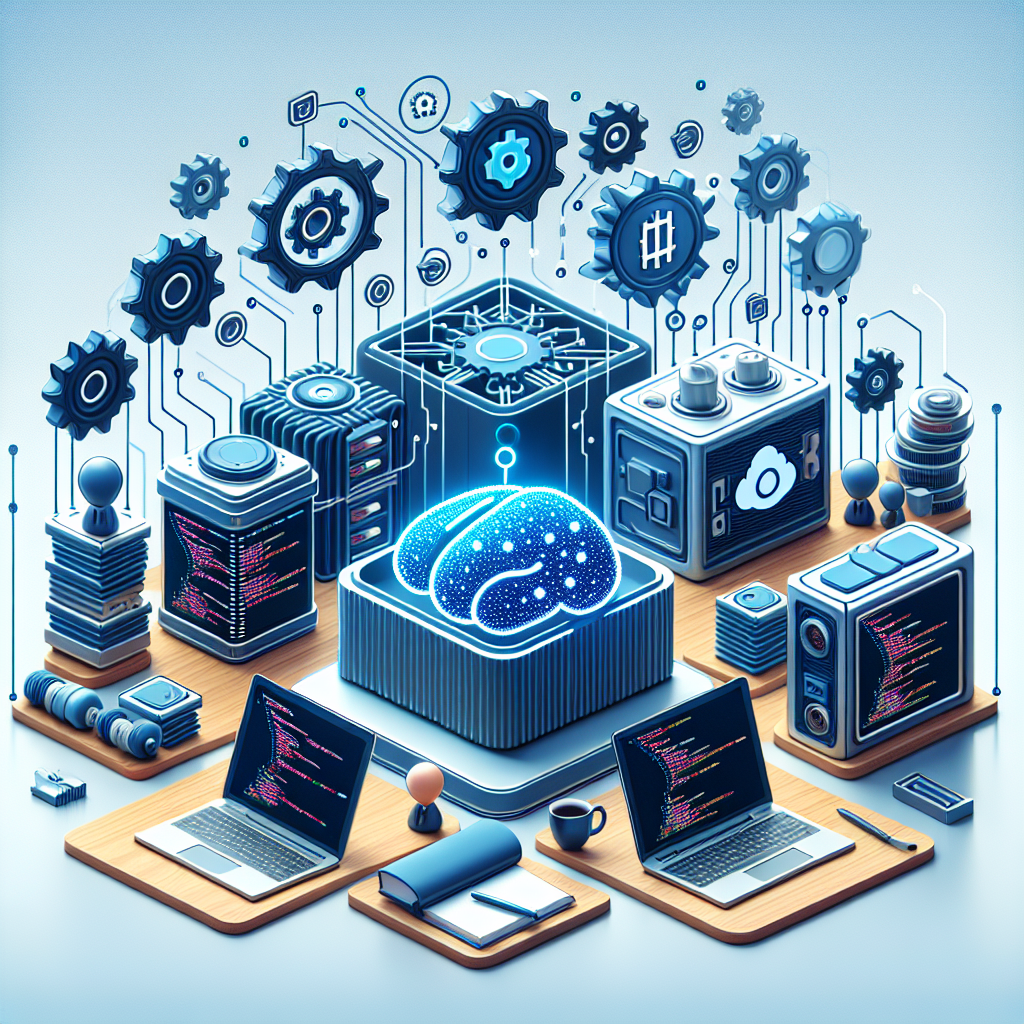Deploying AI Models with Docker: Technical Insights and Best Practices

```html
In today's fast-paced AI landscape, the seamless deployment of machine learning models has become paramount. This is where Docker, an open-source platform designed to automate the deployment, scaling, and management of applications, including AI models, proves invaluable. In this blog post, we'll delve into the technical intricacies of Docker, examining its core components and exploring how it facilitates the deployment of AI models. We'll also provide real-world examples and lessons learned to help you maximize its potential in your AI projects.
1. Introduction to Docker
Docker is a powerful platform that allows developers to package applications into standardized units called containers. These containers bundle all the essential components, including code, runtime, libraries, and dependencies, ensuring that the application runs seamlessly across different computing environments.
Technical Details:
- Containers: Lightweight, standalone, and executable software packages that contain everything needed to run an application.
- Docker Images: Read-only templates used to create containers. Images contain the application's code, runtime, libraries, and other dependencies.
- Docker Engine: The core component that runs and manages containers. It serves as the runtime for Docker containers.
- Dockerfile: A script containing a series of instructions for building a Docker image. It specifies the base image, dependencies, and configuration details.
- Docker Compose: A tool for defining and running multi-container Docker applications using a YAML file to specify services, networks, and volumes.
2. Key Components of Docker
Docker's architecture is composed of several key components that streamline the deployment and management of applications:
- Images: Serve as the building blocks for containers, allowing developers to create applications that can run consistently in any environment.
- Containers: Encapsulate the application and its dependencies, ensuring isolation and consistency across development, testing, and production stages.
- Volumes: Persist data generated and used by Docker containers. Volumes ensure data is not lost when containers are stopped or removed.
- Networks: Facilitate communication between Docker containers, enabling the creation of complex, multi-container applications.
- Registries: Store and distribute Docker images. Docker Hub is the default public registry, though private registries can also be utilized for sensitive projects.
3. Real-World Applications
Docker is widely adopted across numerous industries to enhance the deployment and scalability of AI models:
- Healthcare: Docker enables the deployment of predictive analytics models for patient care, ensuring consistency and reliability across different environments within healthcare institutions.
- Finance: Allows financial institutions to deploy risk management and fraud detection algorithms efficiently, ensuring high availability and reliability.
- Retail: Facilitates the deployment of recommendation engines and inventory management models, enhancing operational efficiency and customer experience.
- Manufacturing: Used to deploy predictive maintenance models that analyze manufacturing equipment data to forecast failures and optimize maintenance schedules.
4. Success Stories
Several organizations have successfully leveraged Docker to enhance their AI workflows:
- Spotify: Uses Docker to deploy machine learning models for music recommendations, ensuring model consistency and scalable deployment across their global platform.
- PayPal: Implemented Docker to manage and deploy fraud detection models, improving the efficiency and reliability of their fraud detection systems.
5. Lessons Learned and Best Practices
Successfully integrating Docker into your AI workflow involves several best practices:
- Modularize Images: Break down Docker images into modular components, making them easier to manage, update, and deploy.
- Utilize Docker Compose: Use Docker Compose to manage multi-container applications, simplifying the orchestration and configuration of services.
- Leverage CI/CD: Integrate Docker with Continuous Integration and Continuous Deployment (CI/CD) pipelines to automate the building, testing, and deployment of Docker images.
- Monitor Containers: Implement monitoring and logging solutions to track container performance and diagnose issues in real-time.
- Secure Images: Regularly scan Docker images for vulnerabilities and utilize best practices for container security to safeguard your AI applications.
Conclusion
Docker is a versatile tool that addresses the complexities of deploying and managing AI models, ensuring consistency and scalability across different computing environments. By integrating Docker into your AI workflow, you can streamline the deployment process, reduce development time, and enhance the reliability of your applications. Understanding Docker's technical details and best practices will enable you to maximize its benefits, driving more efficient and effective AI initiatives within your organization. Whether you are in healthcare, finance, retail, or manufacturing, Docker can significantly enhance your AI deployment strategy, leading to better outcomes and more robust, reliable solutions.
```



